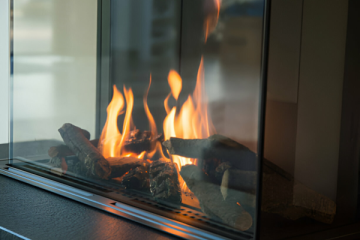In the world of metal materials, both monel metal and stainless steel are widely recognized for their exceptional properties and versatile applications. However, determining which is “better” depends on various factors such as specific application requirements, environmental conditions, and budget considerations. In this comprehensive comparison, we will delve into the key differences between Monel metal and stainless steel to help you make an informed decision.
Monel Metal vs Stainless Steel—1. Composition and Properties
Monel Metal:
Monel is a group of nickel-copper alloys known for their excellent corrosion resistance, high strength, and durability. The most common types of Monel alloys include Monel 400 (UNS N04400) and Monel K500 (UNS N05500). Monel 400 consists of approximately 67% nickel and 30% copper, with small amounts of iron, manganese, silicon, and carbon. Monel K500, on the other hand, contains additional elements such as aluminum and titanium, enhancing its strength and hardness through precipitation hardening.
Stainless Steel:
Stainless steel is a group of iron-based alloys containing a minimum of 10.5% chromium, along with varying amounts of other alloying elements such as nickel, manganese, and molybdenum. The addition of chromium imparts stainless steel with its corrosion-resistant properties by forming a passive oxide layer on the surface. Stainless steel is available in numerous grades, each offering different combinations of properties such as corrosion resistance, strength, and formability.
Monel Metal vs Stainless Steel—2. Corrosion Resistance
Monel Metal:
Monel alloys exhibit excellent resistance to corrosion in various environments, including seawater, acids, alkalis, and other harsh chemicals. The high nickel content in Monel provides superior resistance to both reducing and oxidizing conditions, making it suitable for marine, chemical processing, and aerospace applications where corrosion is a significant concern.
Stainless Steel:
Stainless steel is also renowned for its corrosion resistance, particularly in acidic and chloride-rich environments. The passive oxide layer formed on the surface of stainless steel provides protection against rust and corrosion, making it ideal for applications in food processing, medical equipment, architectural structures, and consumer goods.
Monel Metal vs Stainless Steel—3. Strength and Toughness
Monel Metal:
Monel alloys, especially Monel K500, offer high strength and toughness, particularly in cryogenic and high-temperature environments. The precipitation hardening process further enhances the mechanical properties of Monel K500, making it suitable for demanding applications such as aerospace components, marine hardware, and oil and gas equipment.
Stainless Steel:
Stainless steel exhibits excellent mechanical properties, including high tensile strength, hardness, and toughness. However, the specific strength and toughness of stainless steel vary depending on the grade and heat treatment. Certain stainless steel grades, such as duplex and precipitation-hardening stainless steels, offer superior strength and corrosion resistance compared to standard austenitic stainless steels.
Monel Metal vs Stainless Steel—4. Cost Considerations
Monel Metal:
Monel alloys, particularly Monel K500, are generally more expensive than stainless steel due to the higher cost of nickel and other alloying elements. The superior performance and durability of Monel may justify the higher initial cost in applications where corrosion resistance and strength are paramount.
Stainless Steel:
Stainless steel is available in a wide range of grades and price points, making it a more cost-effective option for many applications. While certain specialty stainless steel grades may be more expensive, standard austenitic and ferritic stainless steels offer a good balance of performance and affordability for various applications.
Monel Metal vs Stainless Steel—5. Application Specificity
Monel Metal:
Monel alloys are preferred for applications requiring exceptional corrosion resistance, high strength, and reliability in harsh environments. Common applications include marine engineering, chemical processing, aerospace technology, and oil and gas exploration.
Stainless Steel:
Stainless steel is suitable for a wide range of applications across diverse industries, including food processing, automotive manufacturing, architectural design, and medical equipment. The versatility of stainless steel stems from its corrosion resistance, hygienic properties, aesthetic appeal, and ease of fabrication.
Conclusion
In conclusion, both Monel metal and stainless steel offer unique advantages and are well-suited for various applications in different industries. The choice between Monel metal and stainless steel depends on specific performance requirements, environmental factors, cost considerations, and the intended application.
As a reputable metal supplier, Huaxiao Metal provide both monel metal and stainless steel products at a competitive price, don’t hesitate to get in touch with Huaxiao Metal!




